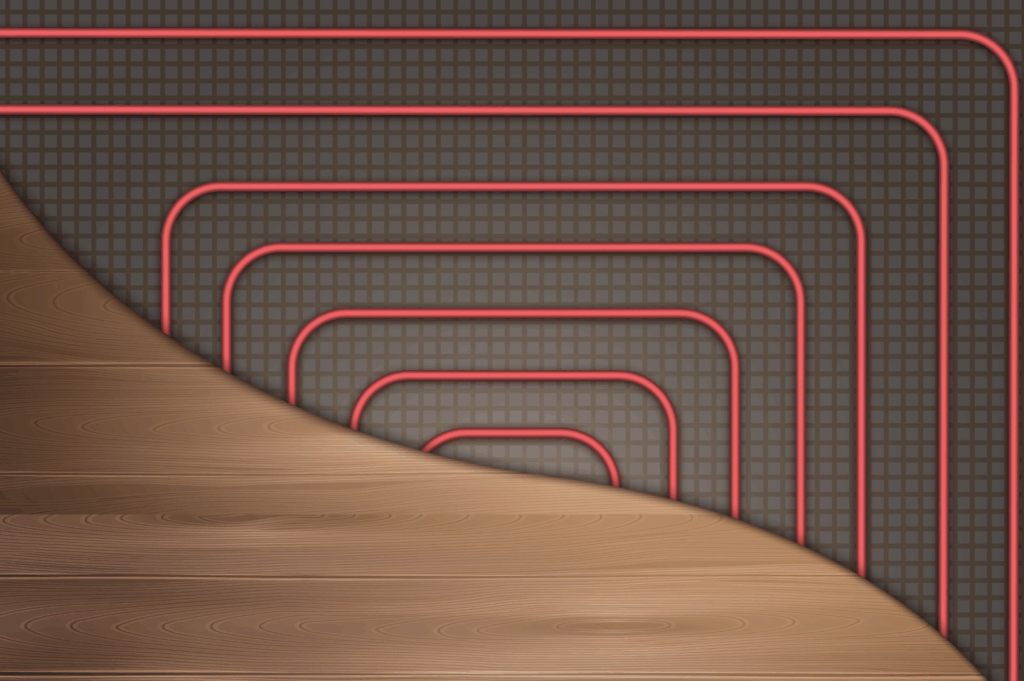How does Underfloor Heating Work?
Underfloor heating is a modern and efficient form of central heating that provides even warmth and greater comfort compared to traditional radiators. Instead of directly heating the air, it warms the floor first, which then radiates heat evenly throughout the room.

Types of Underfloor Heating Systems
There are two main types of underfloor heating systems: water-based and electric.
Water-based underfloor heating is connected to a boiler or a heat pump and is ideal for larger areas or new constructions.
Electric underfloor heating uses heating mats or cables connected to a power source, making it suitable for smaller spaces or renovation projects.
Each system has its own installation requirements and advantages, but both provide quiet operation and a clean, modern look—eliminating the need for bulky radiators.
How Underfloor Heating Works
Water-Based Underfloor Heating
This system uses polyethylene pipes installed evenly beneath the floor surface. The pipes are laid over a layer of insulation to ensure the heat travels upward and are then covered with mortar to create a smooth base for the final flooring material.
The pipes connect to a manifold, which links to your boiler or heat pump. Hot water circulates through the pipes—around 35–40°C for heating and 15–16°C for cooling—providing a comfortable indoor temperature. The entire system is managed through a thermostat and programmer for precise control.
Electric Underfloor Heating
Electric systems use heating mats or cables placed beneath the floor surface. These are laid on screed for stability, followed by insulation to prevent heat loss downward. Once installed, the system connects to the mains power supply and is controlled by a thermostat.
As the floor heats up, warmth radiates evenly upward, creating a balanced and comfortable indoor environment.
Benefits of Underfloor Heating
Because the heat is distributed evenly, underfloor heating operates efficiently at lower temperatures than traditional radiators—reducing energy consumption and running costs.
The system also enhances home aesthetics by removing visible radiators and improves indoor air quality by minimizing dust circulation. When combined with renewable energy systems like air source heat pumps, underfloor heating can significantly lower carbon emissions and energy bills.
With smart thermostats and zoned controls, homeowners can adjust the temperature in each room independently, ensuring comfort and efficiency throughout the home.
JNOD Floor Heating Solutions
JNOD electric boilers and air source heat pumps are the perfect partners for underfloor heating systems. They provide stable, energy-efficient heating and precise temperature control for modern households.
Our DC inverter technology ensures reliable performance with reduced energy use, while smart controls make it easy to manage your indoor climate anytime, anywhere.
Whether you’re building a new home or upgrading an existing one, JNOD heating solutions help you create a warm, comfortable, and eco-friendly living environment.
